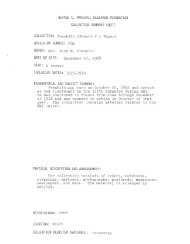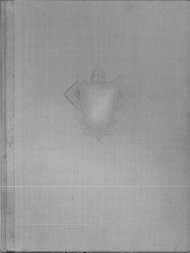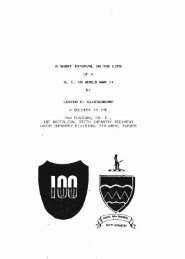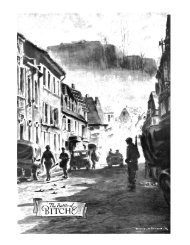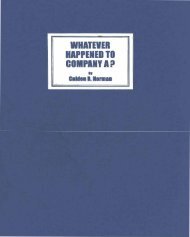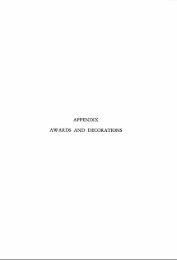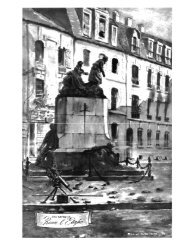Joint Operating Concept (JOC) - GlobalSecurity.org
Joint Operating Concept (JOC) - GlobalSecurity.org
Joint Operating Concept (JOC) - GlobalSecurity.org
You also want an ePaper? Increase the reach of your titles
YUMPU automatically turns print PDFs into web optimized ePapers that Google loves.
stabilization, transition, and reconstruction (SSTR) tasks are best performed by<br />
indigenous institutions, intergovernmental <strong>org</strong>anizations (IGOs),<br />
nongovernmental <strong>org</strong>anizations (NGOs), and OGAs. Nonetheless, both concepts<br />
envision the requirement for joint forces to perform all tasks necessary to<br />
establish or maintain civil order when civilian agencies cannot do so.<br />
IW and the Shaping Operations <strong>JOC</strong> (Currently in Development). The<br />
Shaping Operations <strong>JOC</strong> is expected to describe the long-term, integrated joint<br />
force actions taken before or during crisis to build partnership capacity, influence<br />
non-partners and potential adversaries, and mitigate the underlying causes of<br />
conflict and extremism. The Shaping Operations <strong>JOC</strong> will concentrate on preconflict,<br />
preventative actions intended to avoid a crisis-precipitating event.<br />
Shaping operations enable rapid action when crises occur and military<br />
intervention is required. Shaping operations are critical to gaining knowledge of<br />
the operational environment, gaining operational access, and preparing the<br />
operational environment for potential future IW operations.<br />
IW and the Deterrence Operations <strong>JOC</strong>. The joint force deters potential<br />
adversaries by the threat of cost imposition, the denial of the prospect of<br />
success, or the encouragement of adversary restraint. The credible capability<br />
and apparent will of the US government (USG) to defeat any irregular threat and<br />
to conduct successful IW against a potential adversary’s homeland or global<br />
interests could be an important factor in deterring aggression that could trigger<br />
such a war. Thus, a credible IW capability can have deterrent effects consistent<br />
with the Deterrence Operations <strong>JOC</strong>.<br />
IW and the Homeland Defense and Civil Support <strong>JOC</strong>. IW operations<br />
represent important elements of protecting the US homeland in the forward<br />
regions of the layered defense construct described in the Homeland Defense and<br />
Civil Support <strong>JOC</strong>. IW can eliminate or prevent the emergence of hostile<br />
governments or non-state groups, decrease ungoverned spaces that provide<br />
breeding grounds for groups hostile to US security interests, and reduce the<br />
threat of possible attacks on the US homeland.<br />
3. The Military Problem<br />
The complexity of the future security environment is rooted in global and<br />
regional ideological and political struggles. These struggles will challenge<br />
traditional US military approaches. Faced with the conventional warfighting<br />
capacity of the United States, our adversaries will likely choose to fight using a<br />
hybrid of irregular, disruptive, catastrophic, and traditional capabilities as a way<br />
to achieve their strategic objectives. The strategy of our adversaries will be to<br />
subvert, attrite, and exhaust us rather than defeat us militarily. They will seek<br />
to undermine and erode the national power, influence, and will of the United<br />
States and its strategic partners. Our adversaries will continue to wage IW<br />
against us until we demonstrate the same competency in IW that we<br />
demonstrate in conventional warfighting.<br />
16




